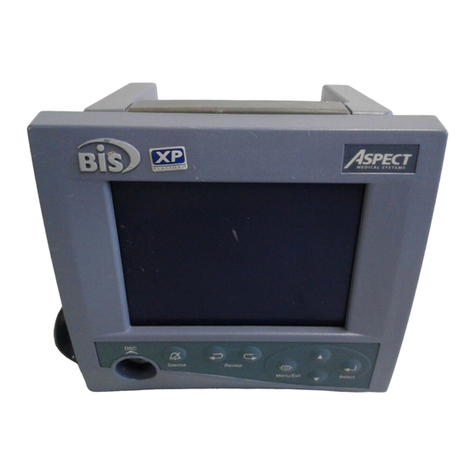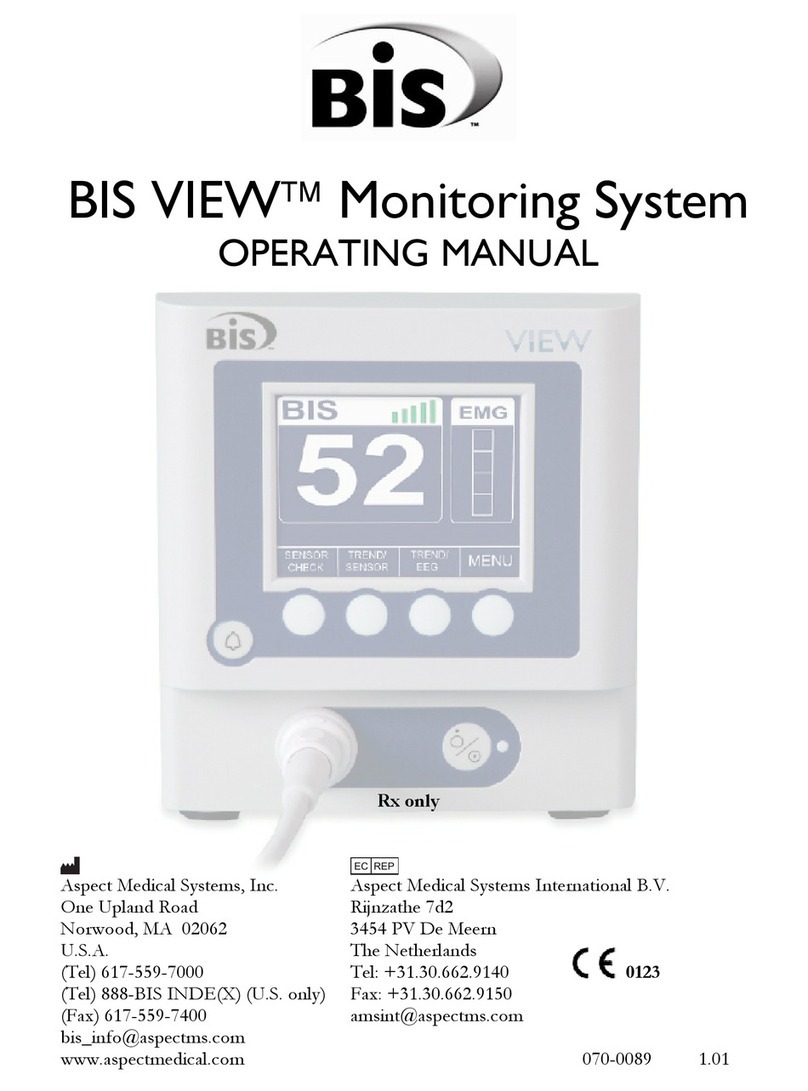
ii
4.3 INSTALLATION AND VERIFICATION PROCEDURE..........................................4-5
5PREVENTIVE MAINTENANCE, CARE AND CLEANING ......................................5-1
5.1 CARE AND CLEANING ........................................................................................5-1
5.1.1 CLEANING THE MONITOR AND DIGITAL SIGNAL CONVERTER...................................5-1
5.1.2 DISINFECTING THE MONITOR AND DIGITAL SIGNAL CONVERTER .............................5-1
5.1.3 CLEANING THE MONITOR DISPLAY.........................................................................5-1
5.2 PREVENTIVE MAINTENANCE.............................................................................5-2
5.2.1 CHECKING THE BATTERY ......................................................................................5-2
5.2.2 CHECKING LEAKAGE CURRENT .............................................................................5-2
5.2.3 A-2000 MONITOR SYSTEM CHECKOUT PROCEDURE..............................................5-3
5.2.4 DSC CHECKOUT PROCEDURE...............................................................................5-4
5.2.5 PATIENT INTERFACE CABLE (PIC) CHECKOUT PROCEDURE ...................................5-4
5.2.6 PHYSICAL INTEGRITY INSPECTION .........................................................................5-5
6DIAGNOSTICS AND TROUBLESHOOTING..........................................................6-1
6.1 GENERAL TROUBLESHOOTING........................................................................6-1
6.2 A-2000 BIS MONITOR SYSTEM TROUBLESHOOTING PROCEDURE..............6-2
6.2.1 MONITOR TROUBLESHOOTING PROCEDURE ........................................................6-2
6.2.2 DSC TROUBLESHOOTING PROCEDURE..................................................................6-4
6.2.3 PIC AND SENSOR TROUBLESHOOTING PROCEDURE...........................................6-5
6.2.4 DSC CABLE PROBLEM ISOLATION .........................................................................6-6
6.3 STATUS MESSAGES AND OPERATOR ACTIONS ............................................6-7
7SERVICING THE A-2000 SYSTEM.........................................................................7-1
7.1 REPLACING MAJOR COMPONENTS.................................................................7-1
7.1.1 TO REPLACE THE PIC: ..........................................................................................7-1
7.1.2 TO REPLACE THE DSC:.........................................................................................7-2
7.1.3 TO REPLACE THE MONITOR:..................................................................................7-2
7.2 FUSE REMOVAL AND INSTALLATION...............................................................7-2
7.3 WHAT TO DO WITH ACOMPONENT THAT REQUIRES SERVICE....................7-3
7.4 REPACKAGING FOR SHIPPING AND STORAGE..............................................7-3
7.5 DISASSEMBLING AND REASSEMBLING THE DSC..........................................7-4
7.5.1 REQUIRED TOOLS AND SUPPLIES..........................................................................7-4
7.5.2 THE DSC CASE....................................................................................................7-5
7.5.3 THE DSC CABLES (MONITOR AND PIGTAIL)...........................................................7-9
7.5.4 DSC CHECKOUT AND SAFETY TESTS..................................................................7-10
8A-2000 SPECIFICATIONS ......................................................................................8-1
8.1 INTRODUCTION:..................................................................................................8-1
8.2 WARRANTY..........................................................................................................8-4
9APPENDIX I.............................................................................................................9-1





























